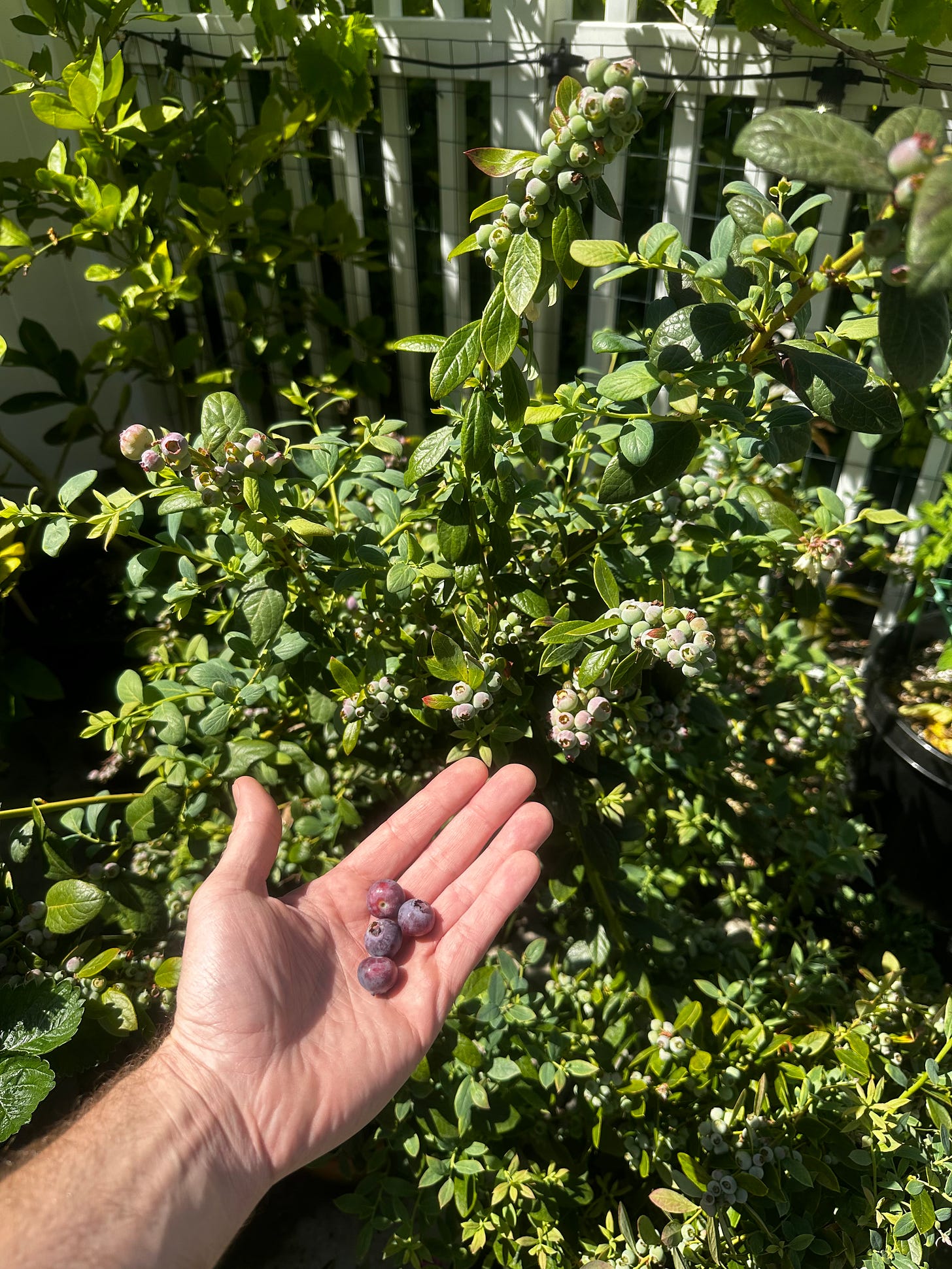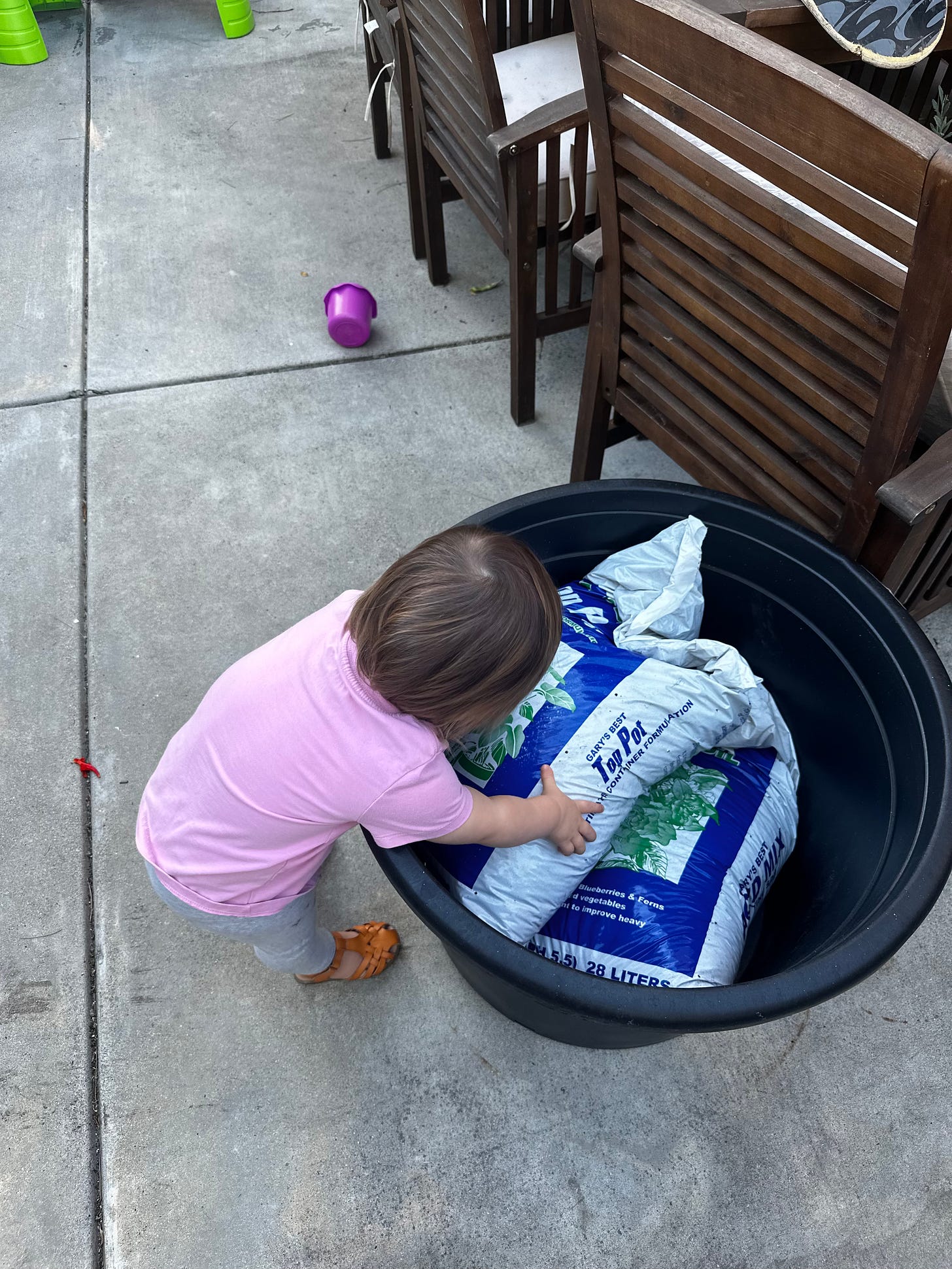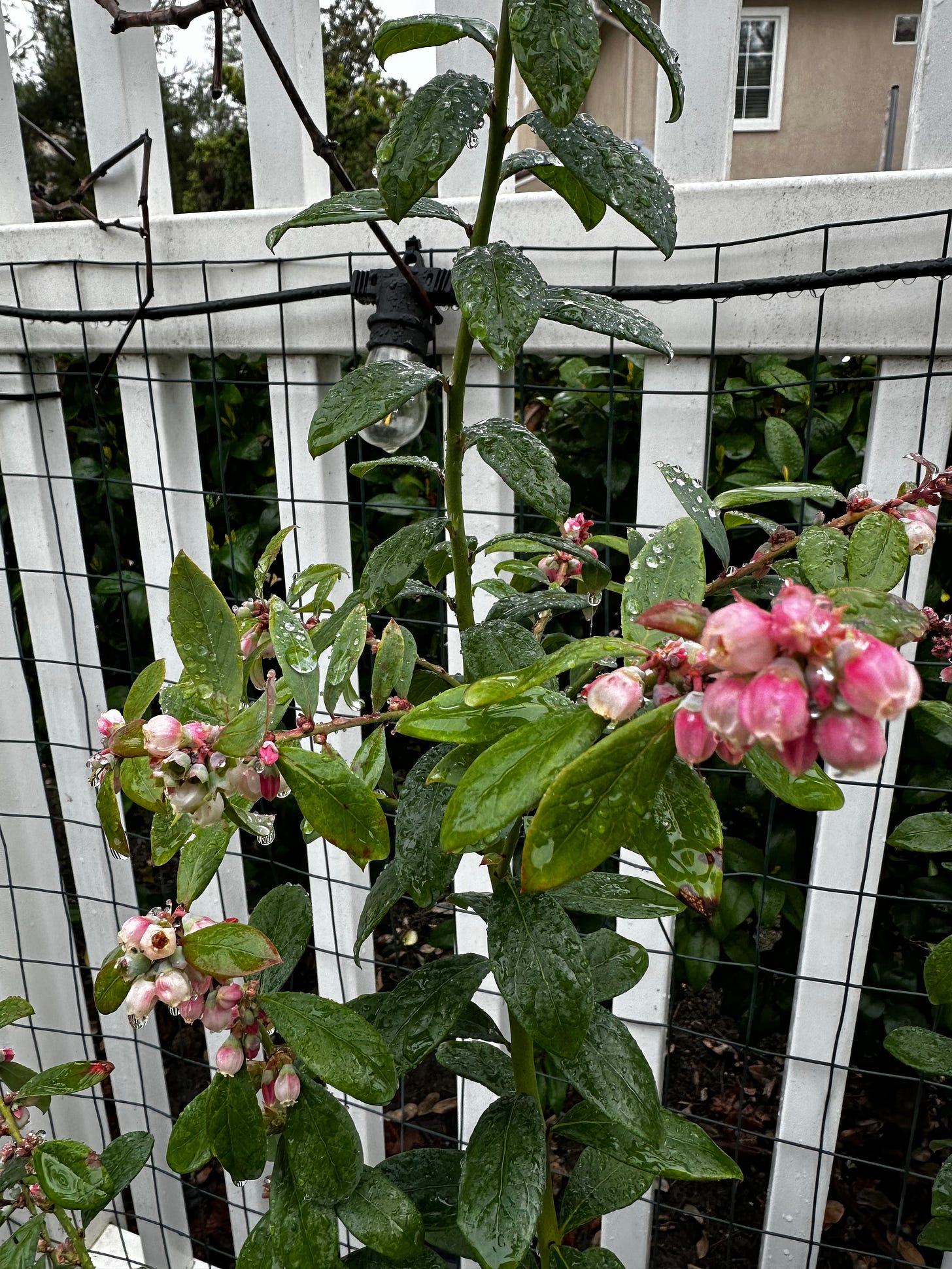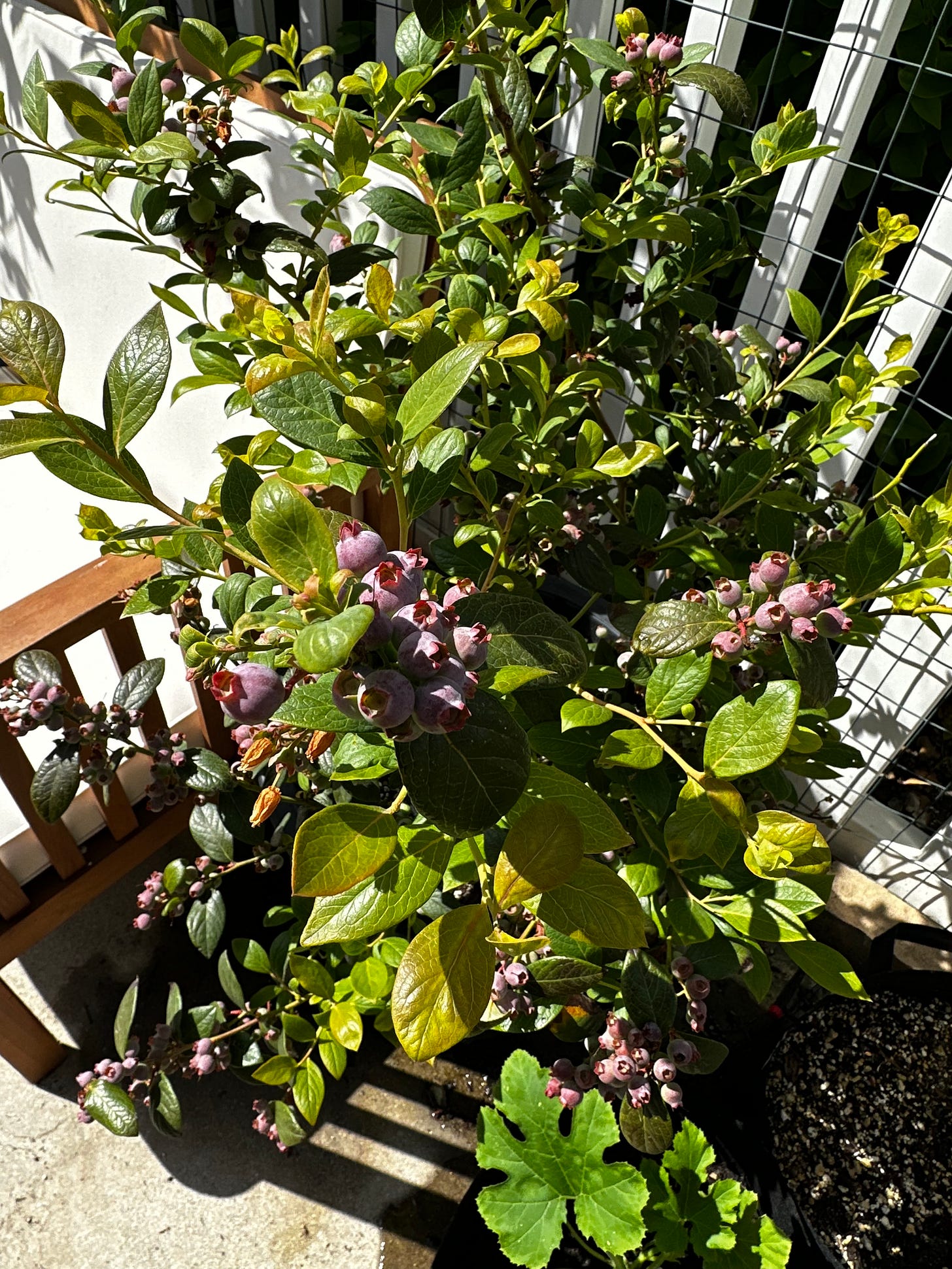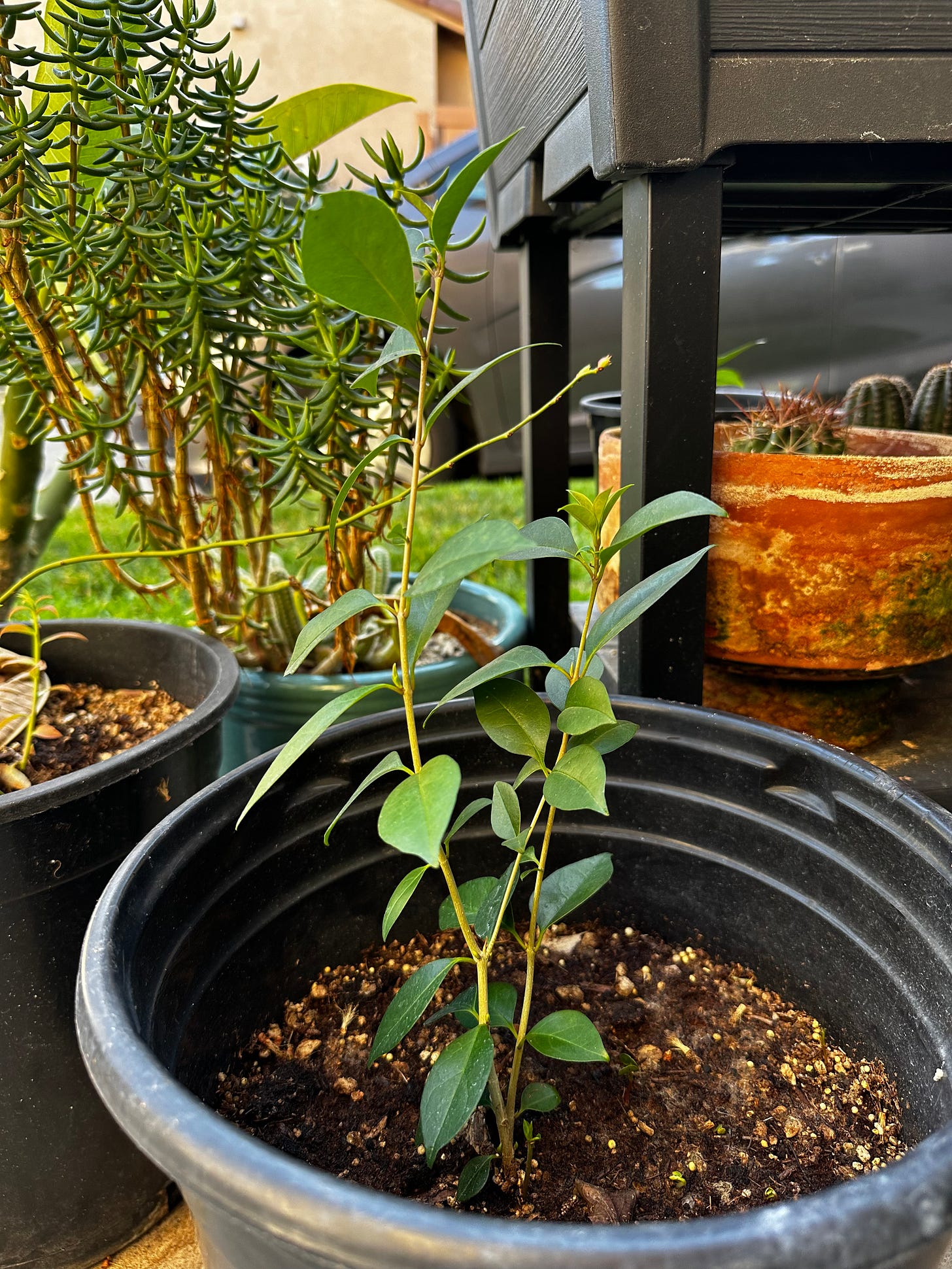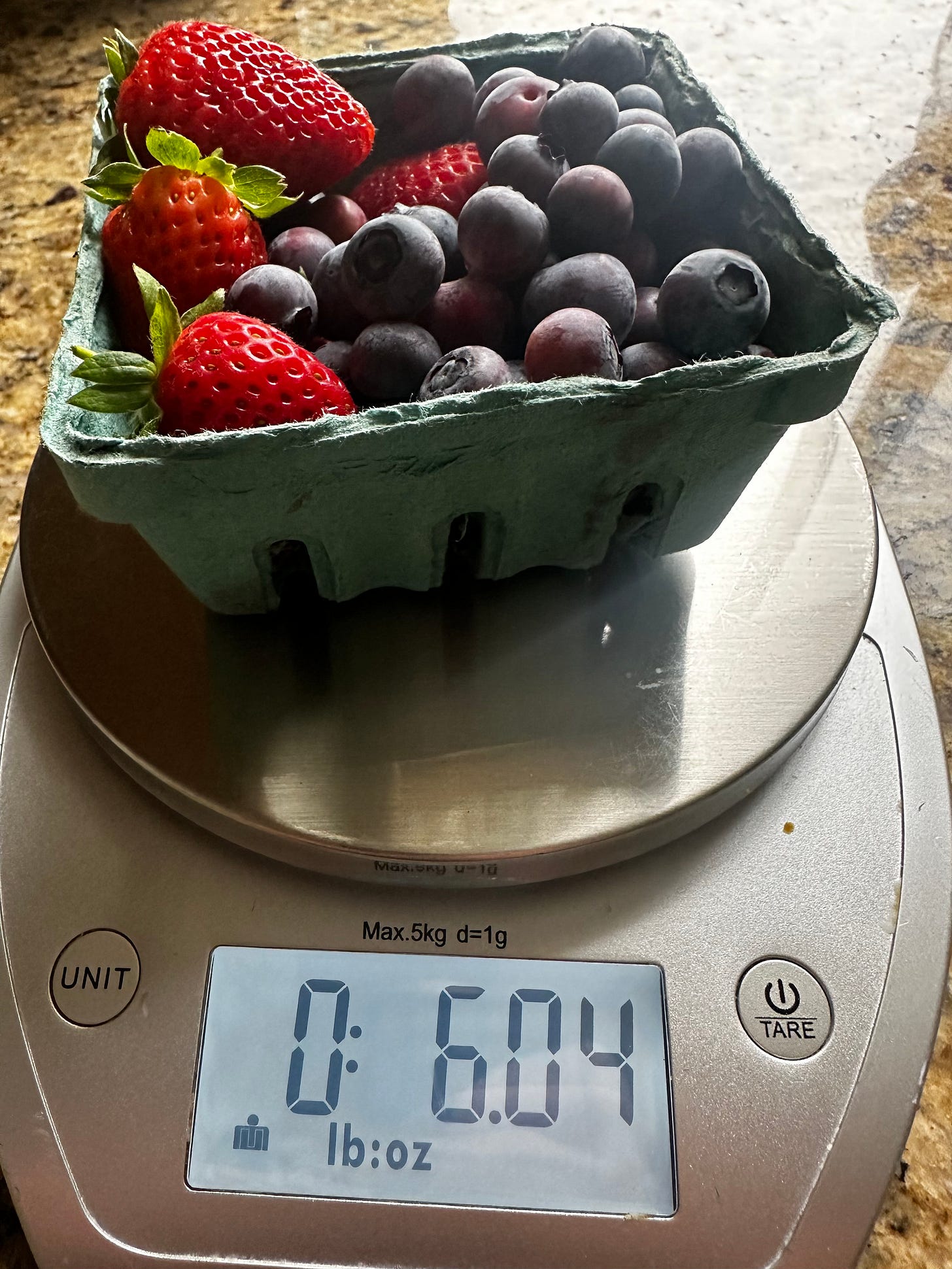When I picked up my first two blueberry bushes in March of 2023, I wasn’t sure what to expect as far as harvest goes. Living in a strawberry dominated area, I’d always assumed blueberries would be difficult to grow. But with a bit of research and the right approach, I discovered that these resilient plants can thrive almost anywhere when given the proper care. Let me share how I’ve turned blueberries into one of the most rewarding crops in my garden.
(Photo: My first two blueberry bushes in early spring, just after planting.)
Blueberries in Non-Traditional Climates
Blueberries are often associated with cooler regions and acidic soils, but modern breeding has made it possible to grow them in a variety of climates. Southern Highbush varieties like “Misty,” “Sunshine Blue,” “Southmoon,” and “O’Neal” thrive in areas with fewer chill hours and warmer temperatures. The University of Florida has played a significant role in creating varieties that excel in warmer zones, making it easier than ever to grow blueberries in challenging climates. In fact, I’ve even expanded my collection to include unique varieties like “Pink Lemonade” and a volunteer bush that I suspect is a natural cross of my “Southmoon” and “Sunshine Blue” plants.
(Photo: The same bush in the first photo, a little over a year later)
The Soil Challenge
Blueberries are picky about their soil. They prefer an acidic environment with a pH between 4.5 and 5.5. For those of us in areas with naturally alkaline soil, this can seem like a dealbreaker. Instead of fighting my local soil, I chose to grow my blueberries in pots, which gave me complete control over the growing medium.
(Photo: A local nursery creates a mix specifically for acid loving plants)
My Potting Mix Recipe
The potting mix I use has been key to my success. It’s a simple blend that mimics the natural environment blueberries love:
Canadian Sphagnum Peat Moss: The primary ingredient, providing the acidity blueberries need.
Pumice or Perlite: Ensures excellent drainage, preventing waterlogging.
Worm Castings: Adds organic matter and promotes a healthy microbial environment.
This mix keeps the roots healthy and ensures the soil retains the perfect acidity.
Feeding and Watering
Blueberries thrive with consistent care. Here’s how I keep mine happy:
Fertilizer: I use an acidic organic fertilizer designed for blueberries and other acid-loving plants. Products containing cottonseed meal, sulfur, and feather meal work well to maintain soil acidity and provide essential nutrients.
Watering: Blueberries prefer evenly moist soil. I use rainwater or dechlorinated water whenever possible to avoid raising the soil’s pH. During hot weather, I check the soil daily to ensure it doesn’t dry out. Blueberry bushes aren’t especially thirsty, but the heat will dry anything out so stay vigilant.
Success in the First Year
By late spring of their first year, my blueberry bushes were already producing clusters of delicious fruit. The flavor was incomparable to store-bought blueberries—sweet, juicy, and bursting with freshness. What’s more, blueberries are surprisingly low-maintenance. Aside from regular feeding and watering, they’ve been easy to care for. Growing them in pots has also allowed me to move them to sunnier spots throughout the season. This is critical as I’ve got a tall house and a short yards on both sides. I try my best to keep up with the sun!
(Photo: The blossoms are beautiful as well)
Tips for Growing Blueberries Anywhere
If you’re considering growing blueberries, here are my top tips:
Choose the Right Varieties: Research varieties suited to your climate. Southern Highbush types are great for warmer regions, while Northern Highbush varieties thrive in cooler climates. Consider varieties developed by the University of Florida for warmer zones.
Use Containers: Pots allow you to control the soil’s acidity and drainage, making it easier to meet the plant’s needs. If blueberries grow well in ground where you live, please disregard this.
Feed with Care: Use a fertilizer specifically designed for acid-loving plants to keep the soil balanced.
Monitor Water: Keep the soil consistently moist but not soggy. If using tap water, consider testing for pH to ensure it won’t affect the soil.
Sunlight: Ensure your blueberries get at least 6-8 hours of direct sunlight each day for optimal growth and fruiting.
Cross-Pollinate!: I cannot stress this one enough. Get different varieties growing close together and your berry size will most likely double.
(Photo: A sunny corner of my patio where my blueberries thrive.)
Expanding My Collection
In 2024, I added more varieties to my garden, including “Misty,” “Pink Lemonade,” and “O’Neal.” Each variety has unique characteristics, from the delicate sweetness of “Misty” to the novelty of “Pink Lemonade” with its blush-colored berries. One of the most exciting surprises has been a volunteer bush that sprouted in my garden. I suspect it’s a hybrid of “Southmoon” and “Sunshine Blue,” and I can’t wait to see how it develops.
(Photo: My volunteer blueberry bush, an unexpected but welcome addition to my collection.)
Why Blueberries Are Worth It
Growing blueberries has transformed my approach to gardening. These versatile plants are not only beautiful but also incredibly rewarding. With the right setup, anyone can grow blueberries, regardless of climate or soil challenges. Whether you’re looking for a productive edible crop or a fun gardening experiment, blueberries are a fantastic choice.
Have you grown blueberries in your garden? I’d love to hear about your favorite varieties or any tips you’ve discovered along the way. Let’s grow together!






